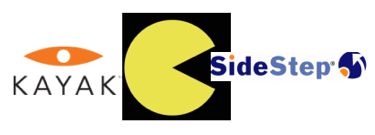Speaking of Southern California [my last post was on Hollywood, if you can believe that], I think it’s time I did another post about Tech Coast Angels, one of the largest and oldest angel investing organizations in the country. Interesting that the term "angel" originated in the entertainment business, but TCA has little to do with Hollywood — rather, they have a whole lot to do with funding technology startups. 
This group is actually comprised of four networks of angels covering a large part of the SoCal geography, from Santa Barbara down to San Diego. My second favorite place, Orange County, is where the largest and oldest of these networks is situated. And that’s where the subject of this post hails from.
Frank Peters, a successful, now semi-retired software entrepreneur (he sold his product to Wall Street firms starting back in the ’80s), has been active as an angel investor for 10 years, and the past five with Tech Coast Angels. On the side, he’s been producing a great podcast for the past two years called "The Frank Peters Show" — subtitled "Startup Stories in Angel Investing and Venture Capital." He’s averaged about 60 podcasts per year so far (pretty amazing). It’s very worthwhile listening for both entrepreneurs and current or potential angel investors — these are great interviews with really interesting subjects, and will definitely help you better understand angel investing. If you have an iPod or iPhone, they’re ideal to listen to in the car to make better use of that commute or long road trip.
Frank’s latest podcast is an interview with two experienced fellow TCA angels: Dave Berkus (how many angels do you know who’ve done 60 deals?), and Sid Mohasseb, who runs Venture Farm, which he describes as "an equity funding source that adds hands-on experience to the execution process." The topic of this podcast is "20 Ways to Fund Your Startup" — which is a list that Dave Berkus developed, but which all three guys discuss in this one-hour+ episode. (If you want to skip the general chat at the beginning and cut right to the chase, the "20 Ways" stuff begins at about 28:25 into the podcast.) Here’s a quick rundown of the gist of the discussion if you don’t have time to listen right now:
Ways to Feed Your Startup Habit
Of the various ways to raise startup capital, angel financing is about in the middle of the continuum, Dave said. Some founders, however, try it too early — they don’t bootstrap enough first. If you do, say the panelists, you’ll have a better chance of getting an audience in the first place to be considered to receive funding. So, here’s the rundown, courtesy of Dave, with some points noted by him and the others as he went through the list:
1) Credit cards – this can be $20-30k, even $50k in some cases, which will require a personal guarantee (but not mortgaging your house).
2) Securing arrangements with suppliers to slow down payments – assuming the business is started – or seeking deferred payment – lawyers typically do that – many even do pro bono work as a way to give back to the community.
3) Take out another mortgage – scary right now, but rates are quite low – shows founder has significant belief in what he or she is doing.
4) Wealthy relatives – "if you were born lucky" – more likely than others to invest.
5) Friends – "means you’re getting lucky, if you have good ones" – can be on board of advisors, too, which costs you nothing.
6) Take on consulting work – even let your company be both a consulting and product development business at first.
7) Affiliate with an incubator – whether physical or virtual – they can help build management team, etc.
8) Well-connected attorney – angels listen to their recommendations.
9) "Rented" CFO – they don’t get paid for just getting the money, but for the financial systems they set up – the analysis of the data is what they deliver, and credibility.
10) Recruit a professional CFO – angels feel much more comfortable then.
11) Get prepaid licenses for your technology – a combination of selling service as well as product – maintenance agreements can be part of this (16-20% of list price of software) – recurring revenue – customers are essentially paying for the engineering and product development – helps refine the value proposition – you don’t need to give it away for free.
12) Accelerated payments – of course, you have to have a rev stream first.
13) Royalties for very specific projects – let those fund your product development – seek out anyone that can benefit from the technology (not just your main target customers).
14) Angel financing – "later the better" to approach them, because you’re then more likely to get funded – however, can be anywhere on the continuum – the later it is, the more likely you’ll get funded (angels will look at what you’ve done so far – how many of the above you’ve taken advantage of) – if you go to angels earlier, your valuation will be lower.
15) Bank line of credit – $50k is available to almost anybody with good credit (with personal guarantee).
16) Strategic partnerships – customer or supplier, helping to develop, promising to distribute, etc – helps to define channels for later sales and distribution.
17) Venture capital, pension funds
18) Private placements
19) Professional restructurers
20) Investment bank, public offering
Dave noted again that angels are in the middle of this continuum. "They’re an avenue for the sophisticated entrepreneur that understands all the other sources and where the risk is, and how fast they need the money."
In the closing discussion, Frank commented that TCA is ten years old now, and is getting more sophisticated. Yes, the others agreed — and "more prudent,
cautious, jaded." But Dave added that it’s certain they’re much more powerful as a group than as individuals. Frank noted that the angel financing business, at least for TCA, slows down at this time of year — from now till about January 10.
Then, the three discussed a recent university study, in which certain TCA members participated, called "Angels in Groups," for which a large amount of data on angel investments was gathered. (The link to the PDF of this study is on Frank’s web page for this podcast (show #132). One of the biggest surprises of the study, they agreed, was the average length of time to a liquidity event. Many angels think of it as generally 3 to 5 years, but they noted that was not happening for those deals studied. Dave said the study found that 61% of the angels surveyed had returns greater than the amount they invested, "meaning 39% didn’t!" The conclusion is that angel investing is more risky than most people thought. A diversity of investments is important "before you can count your chickens," said Dave. Luis Villalobos, the founder of TCA, thinks a portfolio of 25 or more investments is a minimum to expect good returns. The study showed that success happens when the angel is involved in the business. The entrepreneur benefits from the sharing of the experience of angels. Finally, the study found that it doesn’t tend to pay for angels to reinvest, which is somewhat worrisome, the panelists noted. "TCA traditionally funds 2-3% of deals they see," said Dave. "But when we’re ready to take deals to VCs, those firms only invest in 1% of what they see, on average." Therein lies a problem, because angels often to have to invest a second or third time to keep the business going before it’s ready for the VCs. ‘"It’s a game of patience," Dave said.
Frank Peters concluded this podcast by saying he thinks there’s a need to "start testifying more about angel investing, more education, chewing over issues." And he encourages suggestions for future podcasts by email to him at frank@thefrankpetersshow.com.
UPDATE (11/28): And here’s a bonus link on Five of the Best Tips for Courting Angels.

 So, yes, January 28-30, I’ll be in Palm Desert, CA, attending the DEMO ’08 conference as a member of the press corps again. And, as part of this prestigious group, I’ve been given the opportunity to offer Tech~Surf~Blog readers a special discount to attend.
So, yes, January 28-30, I’ll be in Palm Desert, CA, attending the DEMO ’08 conference as a member of the press corps again. And, as part of this prestigious group, I’ve been given the opportunity to offer Tech~Surf~Blog readers a special discount to attend. Click here for more DEMO information and conference details, and here’s a great FAQ page, too. (Just be aware that this discount cannot be combined with other offers or promotions, or applied to registrations that have already been processed.)
Click here for more DEMO information and conference details, and here’s a great FAQ page, too. (Just be aware that this discount cannot be combined with other offers or promotions, or applied to registrations that have already been processed.) 
 That’s right — close to two hundred big ones, enabling Kayak to acquire ("merge with") fellow travel metasearch site Sidestep. Sequoia Capital led the round, which included many other existing investors in both firms, and VC superstar Mike Moritz gets a board seat. This is the largest amount of dough in one Travel 2.0 deal that I can ever remember seeing. I thought
That’s right — close to two hundred big ones, enabling Kayak to acquire ("merge with") fellow travel metasearch site Sidestep. Sequoia Capital led the round, which included many other existing investors in both firms, and VC superstar Mike Moritz gets a board seat. This is the largest amount of dough in one Travel 2.0 deal that I can ever remember seeing. I thought 



 The company says its editorial vision is to "balance professional-grade
The company says its editorial vision is to "balance professional-grade Here are the rules, short and sweet: "Submit a video of your best short film idea. The theme can be anything at all related to “TECHNOLOGY.”
Here are the rules, short and sweet: "Submit a video of your best short film idea. The theme can be anything at all related to “TECHNOLOGY.”
Recent Comments